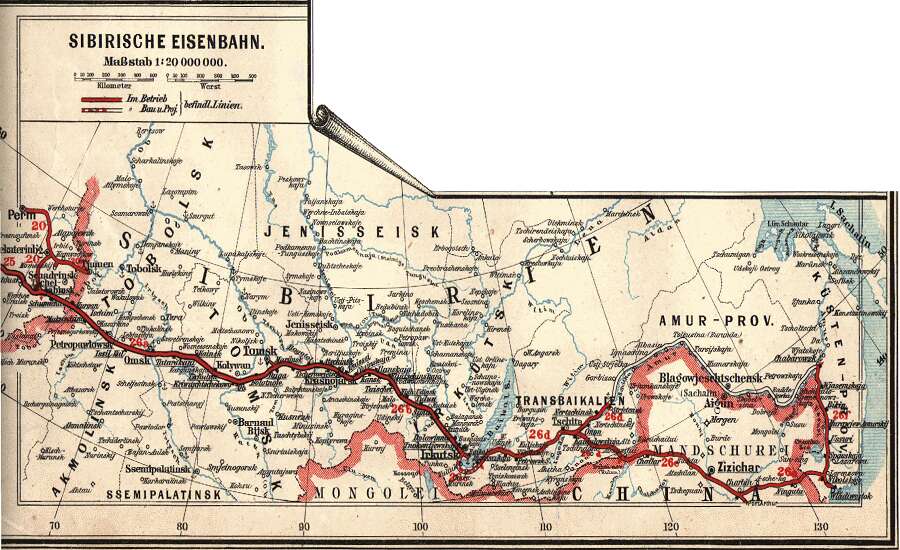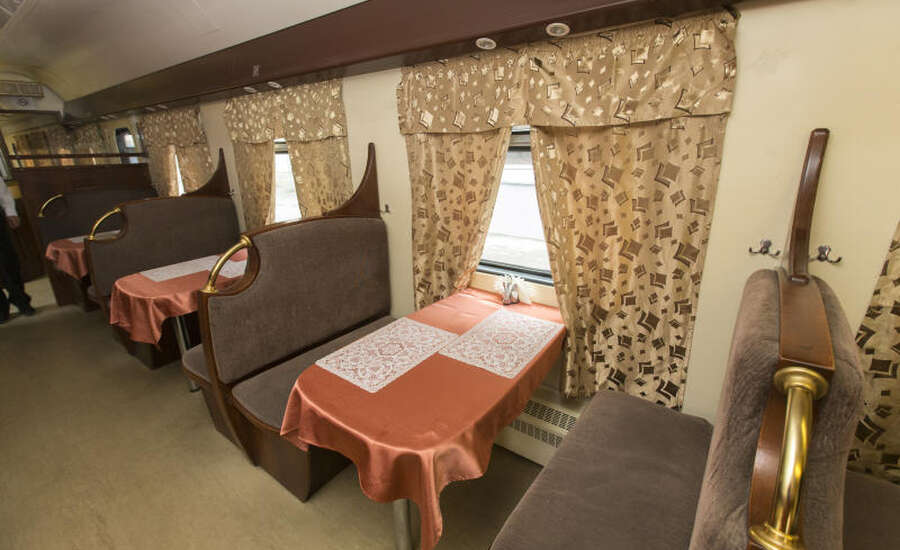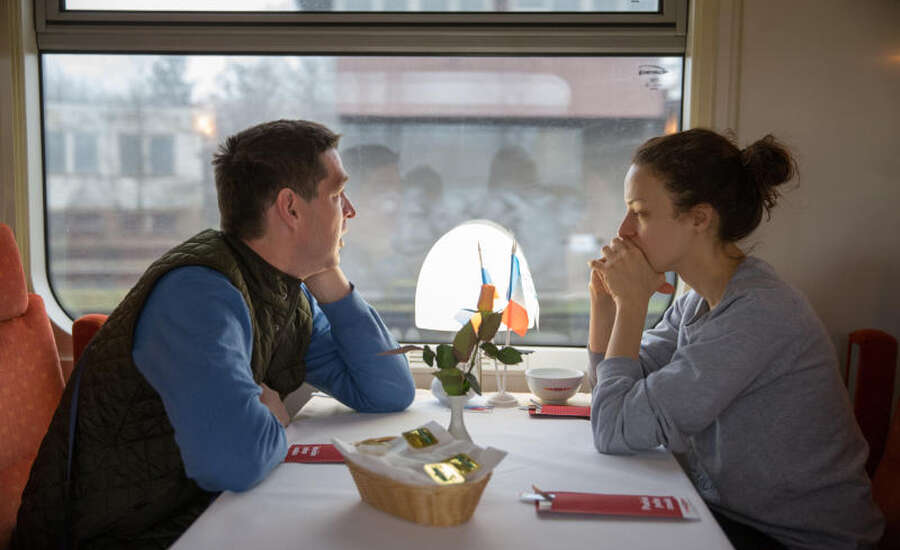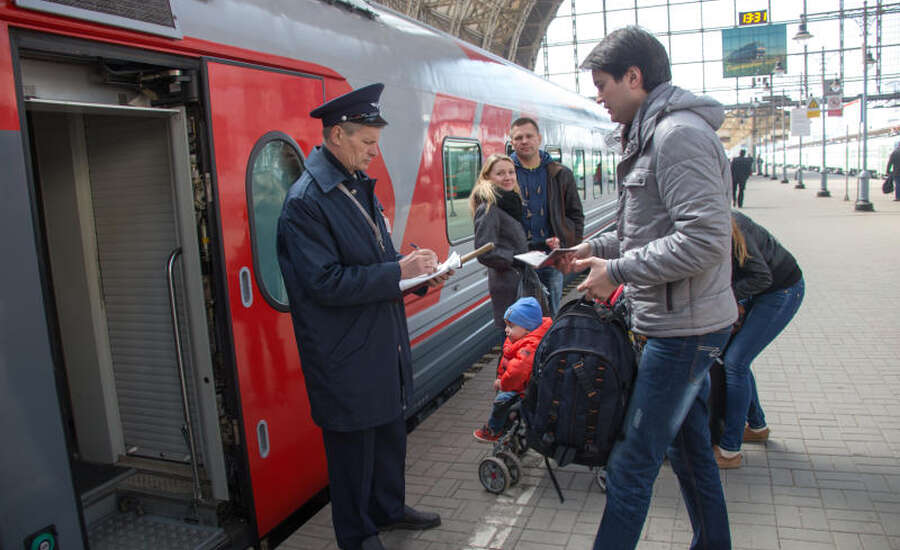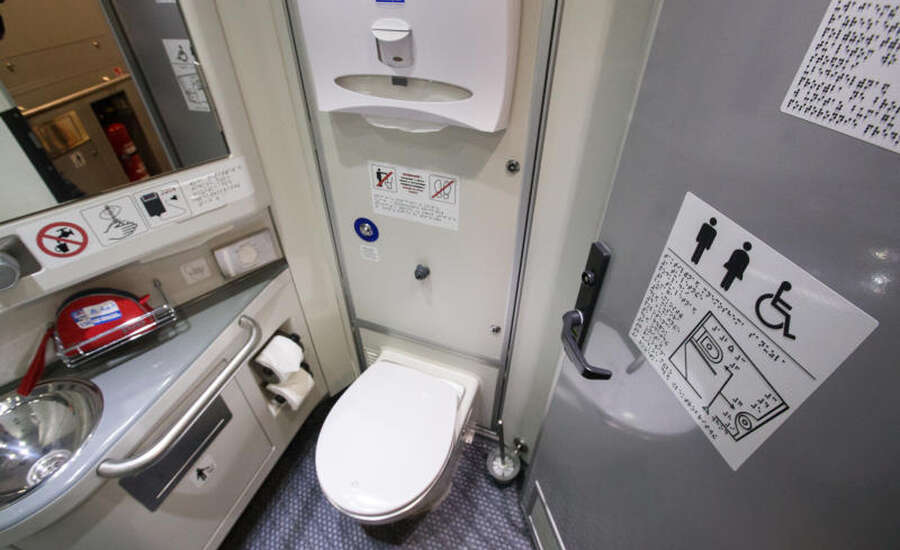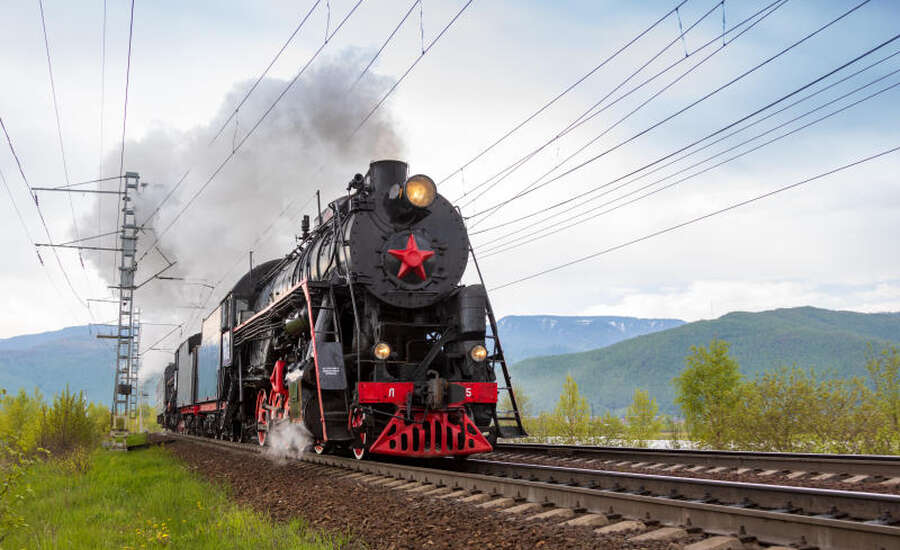
Photo by RZD
What are some insider tips for travelling on the Trans-Siberian Railway?
- Pack sensibly: Russians are partial to a very warm room, and trains are no different. Bring lightweight and comfortable clothing for the train journey
- Pay close attention to your departure time: all Russian train times are according to Moscow Time, no matter where in the country you are
- Be polite and friendly to the provodnik/provodnitsa: they are responsible for all the passengers’ welfare so if you need help, want to pay for an unofficial upgrade, or take a shower, they are your first port of call!
- Check the amenities and facilities on your specific train: some have showers and meals delivered to your cabin and others do not, and you should know what to pack
- Disembark at the station to stretch your legs or browse local specialties sold by platform vendors, but do not stray too far – the train may depart without you
- Choose your cabin and bunk carefully: if you’d like to lay down in peaceful privacy all day, then an upper bunk or first-class cabin is best. If you’re happy to share your space and socialise during the daytime, then a lower bunk in second class is fine
Are you ready to embark on the journey of a lifetime? Then the Trans-Siberian Railway is waiting for you. The world’s longest train ride gives you the opportunity to sit back, relax, and enjoy the marvels of Russian nature. We’ve prepared a guide of useful tips for travelling on the Trans-Siberian Railway, including life-hacks on what to pack, details about amenities and facilities on different trains, what to expect at the station, platform, and train, and COVID-19 safety advice.
What should I pack for a Trans-Siberian train trip?
How many suitcases should I take?
Two bags or suitcases per person is sufficient – no more, as your fellow travellers may not appreciate you commandeering all the luggage storage space! Avoid bringing several little bags which are easier to forget, lose, or steal. When travelling by train for a week, your suitcase will be your wardrobe. If possible, bring a bag with compartments to easily organise your belongings. Pack one suitcase with all of your on-train needs (pyjamas, toiletries, comfortable day clothes) and another bag for your destination (coats, outdoor shoes, smart outfits).
Which clothes should I bring?
Russians love a well-heated room and are afraid of draughts, so you should expect the train carriage to be very warm. Leave your woolly pyjamas and dressing gown at home, and bring comfortable, breathable layers for your days on the train – t-shirts, tracksuit bottoms, sports shorts and jumpers. Don’t forget indoor shoes or slippers! Russians are renowned for their snappy dress sense, but the Trans-Siberian Railway and other long distance rail travel is the exception – jeans and button-up shirts are not necessary or suitable travelling attire. If you plan to break your trip up with stop-offs along the way, pack suitable outerwear for exploring snowy Siberian cities or lightweight clothing for summer visits.
What about toiletries and medicines?
If you’re lucky enough to have a communal – or even private! – shower, then bring miniature shower gels, shampoo etc. If not, then deodorant and baby wipes will suffice. Each carriage has at least one washroom, so pack a toothbrush, toothpaste, soap, a little towel, and toilet paper. There are sockets in each WC for electric shavers. It is unlikely that you’ll find a pharmacy at the train station, so don’t forget to bring any prescription medicine as well as painkillers, anti-allergy medicine, tablets for stomach upsets, and insect repellent for summertime travels. You should also bring earplugs and an eye mask if you are a light sleeper (you never know if a serious snorer will set up camp in your compartment).
Should I pack food and drink for the Trans-Sib rail journey?
Depending on your train, class and ticket, your journey may come ‘with services’ aka with meals. You can also visit the restaurant car or kiosks and vendors at stations along the way. If you get peckish, bring quick snacks– granola bars, crisps, fruit, biscuits and so on. There is a samovar (traditional hot water dispenser) at the end of each carriage, so you can prepare coffee, tea, cuppa soups or instant noodles, and you should bring a couple of big bottles of water, too. Don’t forget a cup, plate, fork, knife and spoon.
Photo by RZD
If you’d like to make friends and even practice some Russian, bring food to share with your fellow passengers – even better if it’s a snack or sweet from back home. If you have Russian neighbours, they will probably welcome you to share their food with them in a great introduction to Russian hospitality!
Drinking alcohol on the train is officially prohibited, apart from in the restaurant car. But in reality, many people enjoy a drink on the train and your neighbour may offer to share some vodka or beer with you.
Photo by RZD
And personal items and entertainment?
Some modern trains are equipped with plug sockets, but bringing a good quality portable charger is your best bet. Expecting excellent Wi-Fi or adequate phone signal in the depths of Siberia is ambitious – and anyway, work can wait. Travelling the Trans-Siberian is the ideal time to switch off and enjoy some interesting books, play card games, or write in your journal. Guide-books and Russian phrase books or a dictionary can prove very useful. If you’ll miss your family, friends, dog and cat when you’re so far from home, don’t forget to bring photographs!
What should I expect…
Before boarding
Once you have arrived at the train station and passed through security control, look at the departure timetable (отправление/otpravleniye), where your train number, time of departure and platform number will be displayed. When departing from a terminus, the train is usually at the platform and ready for boarding 40 minutes before departure. Remember that all train times in Russia are displayed in Moscow Time – even if you’re in the Far East.
Phot by RZD
Carriages are numbered on the first or last window of each car. A provodnik/provodnitsa (conductor) will be waiting at one end of the carriage to welcome you aboard. After showing your passport and ticket, you climb aboard the train. Sometimes the provodnik takes one of the two pages of your ticket, or sometimes just tears the ticket a little. If they leave one page with you, hold onto it until you leave the country.
On the Trans Siberian train
Once you’ve arrived in your cabin, stow your luggage underneath the lower berth. Depending on your cabin class you may have to make up your own bed. Berths in all classes come with a blanket, pillow, mattress and fresh bed linen, usually included in the ticket price. Unless you are travelling on a special tourist train, don’t expect a high level of luxury. The Trans-Siberian is a vital means of transport across Russia for local people and travellers alike, and is built to be comfortable but functional. That said, if you’d like more privacy or better facilities, opt for first class. The provodnik may also be able to arrange an unofficial upgrade or allow you to use their shower – for a fee, of course.
Photo by RZD
Almost all compartments on the Trans-Siberian are unisex, though some trains offer single sex cabins. Unless you book out an entire cabin, your neighbours are randomly assigned and you may be sharing a bunk with a snoring, kolbasa eating guy or a sweet old lady – it’s part and parcel of the adventure! You should choose your bunk tactically. During the day, the bottom bunks in second and third class become communal space for passengers to relax, chat and eat. If you want the freedom to lay back whenever and watch the world go by, then a top bunk would be a better option. On the other hand, the lower bunk offers more headroom and does not require any climbing.
One hour before arriving at your final stop, the provodnik will wake you up and you should unmake your bed and return your bed linen. Try and get to the washroom as soon as possible – when sharing these facilities with dozens of other passengers there is often a large queue in the morning, and on older trains without bio toilets, the WCs are closed once you enter the city.
Photo by RZD
At stations along the way
Train stops are a great time to step outside, relish the fresh air and stretch your legs. Take your tickets, documents, money and phone with you and, if possible, ask your neighbours to look after your suitcases. Always keep track of the duration of the stop, and don’t stray too far from your carriage – sometimes the train departs spontaneously if it is running late and trying to make up time.
At most stations you will find local people selling a wide range of goods and local specialties such as homemade pies, fruit, ice-cream, smoked fish, books, dishes, toys and clothes, usually at very low prices. The station can be a great place to pick up a unique souvenir! But make sure you bring cash – a babushka selling delicious pirozhki at a remote Siberian train station is unlikely to have a card-reader.
COVID-19 safety on the Trans-Siberian Railway
- Avoid travelling in third class (platskart) – open-plan carriages accommodating 54 beds. Travel in first or second class compartments (spalny vagon/kupe) which sleep 2 and 4 travellers respectively. If travelling in a group of two or three, you can also ‘buy out’ a four-person cabin. Most Western travellers opt to travel in second class.
- Opt for a ticket which includes meals. If meals are not included, check whether you have to purchase them at the restaurant car, or whether they are delivered room-service style to your cabin.
- Bring refreshments if you do not want to frequent the samovar at the end of each carriage, the buffet car, or the kiosks and salespeople at stations along the way.
- The higher your class, the fewer passengers you will share amenities with. Toilets are located at the end of each carriage, although some trains offer VIP cabins with their own private bathrooms
Types of Trans-Siberian train
To help you decide what to pack and organise a pandemic-safe journey, we’ve provided information on the facilities and amenities of each train, which differ according to the Trans-Siberian’s three distinct routes:
Trans-Siberian
- #100/099: A non-branded train with daily departures between Moscow and Vladivostok. Only second and third class carriages are available.
- Rossiya: Branded train with daily departures between Moscow and Vladivostok, and first, second and third class carriages. First and second class tickets include meals delivered to you. As of this year, shower cabins have been installed in each carriage.
Trans-Mongolian
- #003/004: Weekly departures from Moscow to Beijing via Mongolia, with first and second class compartments. First class cabins have a shower and toilet shared with the cabin next door. Meals are not included in the ticket price and must be purchased at the restaurant car.
- #005/006: Weekly or fortnightly departures between Moscow and Ulan Bator in Mongolia. You can travel in first or second class, but there are no showers or private toilets and the carriages are quite old.
Trans-Manchurian
- Vostok: Weekly departures from Moscow to Beijing. The train has modern first and second class compartments, but no private bathrooms or showers.
Get ready to be whisked along on a smooth and magical ride on the Trans-Siberian Railway.
Purchase your ticket safely and securely, then relax and let your train adventure begin!
Recommended by
Our travel group under the names Express to Russia, Russian Rail and Trans-Europe Express has been recommended and/or accredited by:

A portion of your order goes to helping underprivileged Russian children.
Learn more

